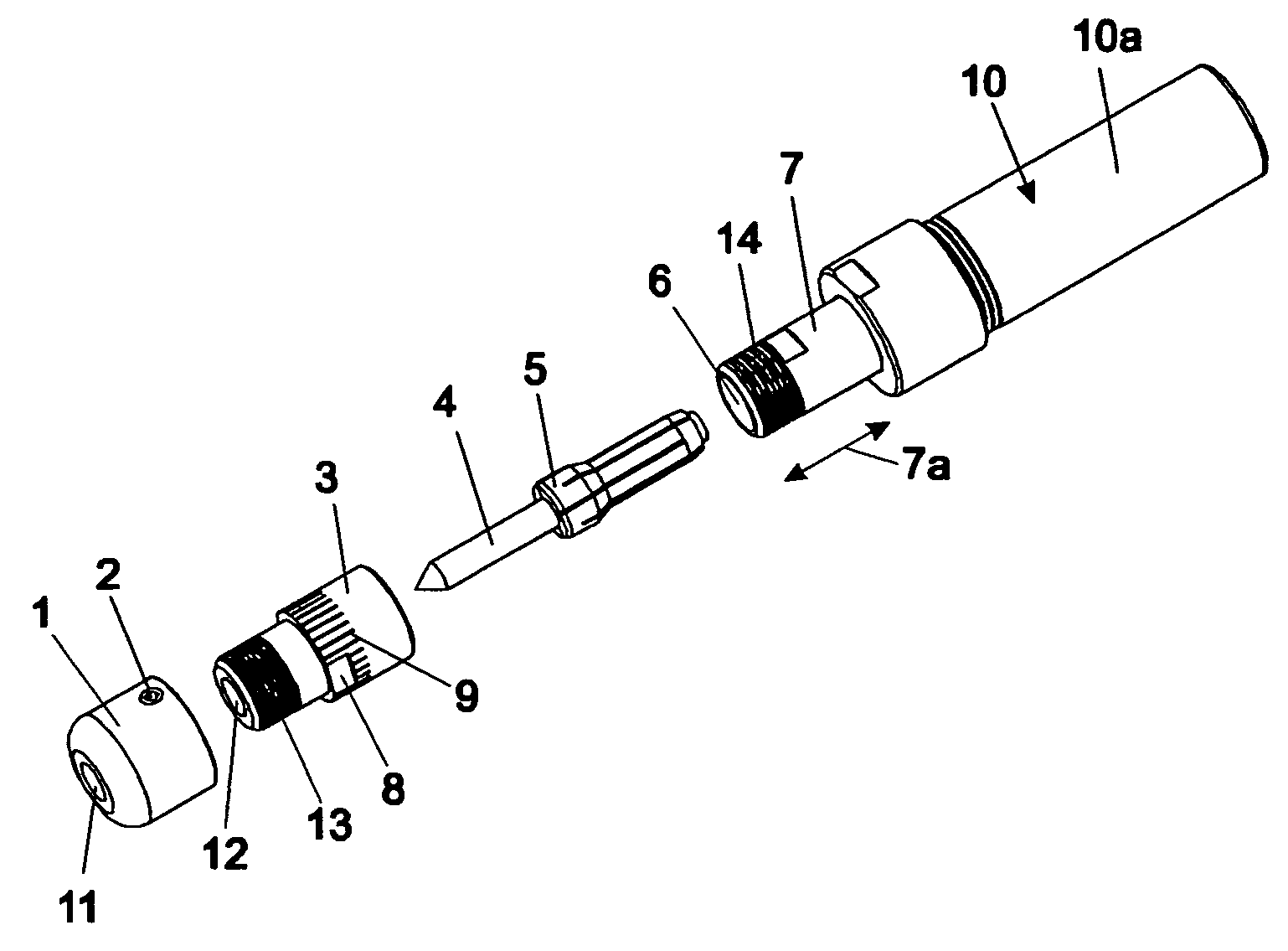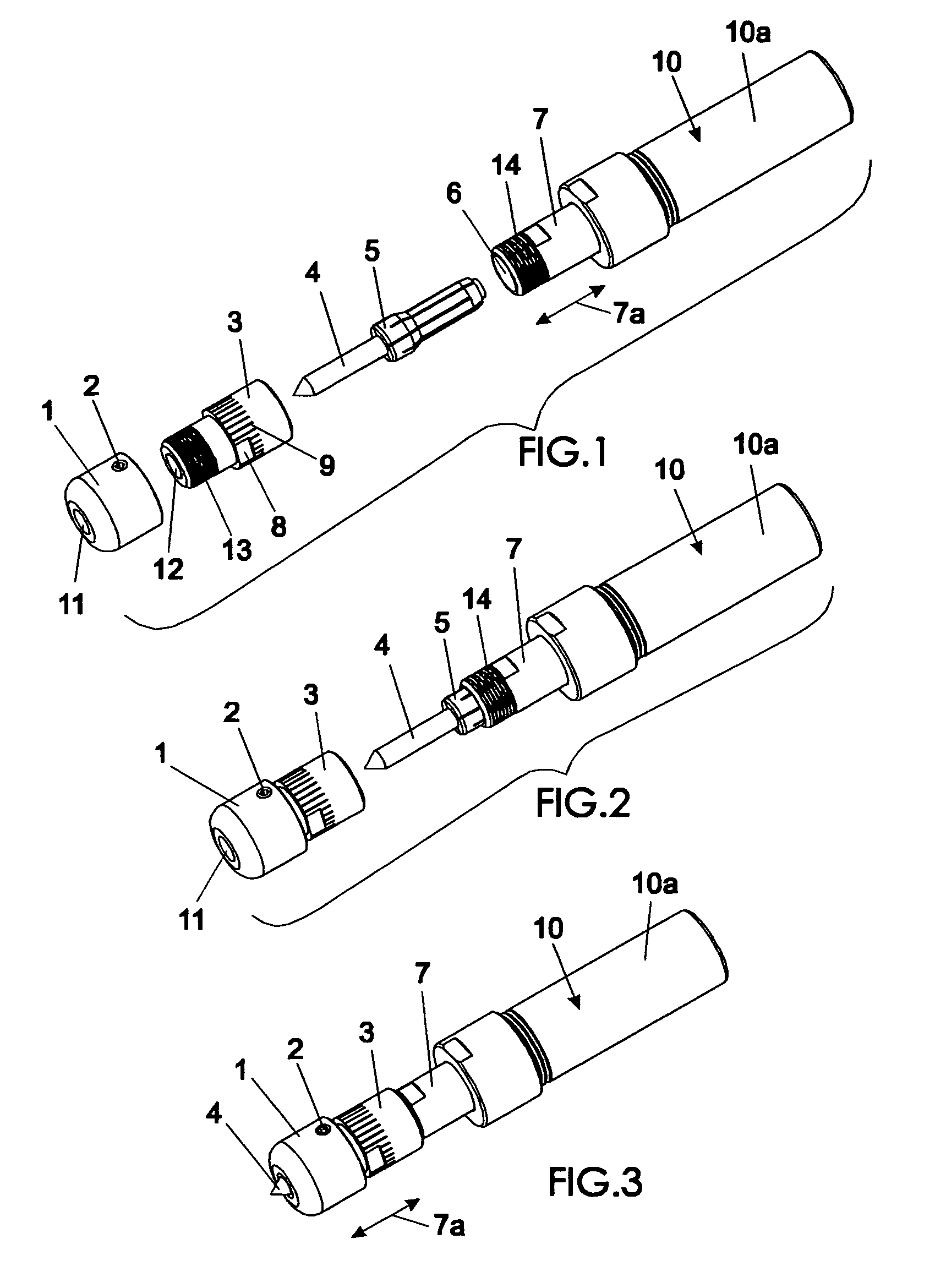Engraving tool depth control nosepiece for enhancing line uniformity
a technology of depth control and engraving tool, which is applied in the direction of printing, writing aids, decorative arts, etc., can solve the problems of engraving tool not having enough time to plunge all the way down, engraving tool has more time to press against the workpiece, engraving tool is too deep when the tool is used,
- Summary
- Abstract
- Description
- Claims
- Application Information
AI Technical Summary
Benefits of technology
Problems solved by technology
Method used
Image
Examples
first embodiment
[0014]FIG. 1 is an exploded perspective view of a depth controlling nosepiece and a spring-loaded engraving toolholder,
[0015]FIG. 2 is a partially assembled exploded perspective view of a first embodiment of a depth controlling nosepiece and a spring-loaded engraving toolholder,
[0016]FIG. 3 is an assembled perspective view of a first embodiment of a depth controlling nosepiece and a spring-loaded engraving toolholder,
second embodiment
[0017]FIG. 4 is an exploded perspective view of a depth controlling nosepiece and a spring-loaded engraving toolholder,
[0018]FIG. 5 is a partially assembled exploded perspective view of a second embodiment of a depth controlling nosepiece and a spring-loaded engraving toolholder,
[0019]FIG. 6 is an assembled perspective view of a second embodiment of a depth controlling nosepiece and a spring-loaded engraving toolholder,
PUM
 Login to View More
Login to View More Abstract
Description
Claims
Application Information
 Login to View More
Login to View More - R&D
- Intellectual Property
- Life Sciences
- Materials
- Tech Scout
- Unparalleled Data Quality
- Higher Quality Content
- 60% Fewer Hallucinations
Browse by: Latest US Patents, China's latest patents, Technical Efficacy Thesaurus, Application Domain, Technology Topic, Popular Technical Reports.
© 2025 PatSnap. All rights reserved.Legal|Privacy policy|Modern Slavery Act Transparency Statement|Sitemap|About US| Contact US: help@patsnap.com



